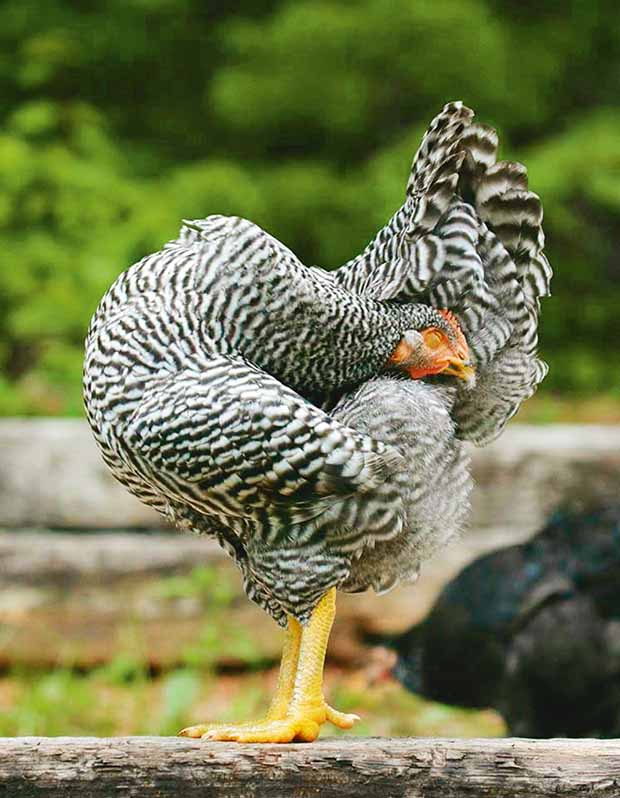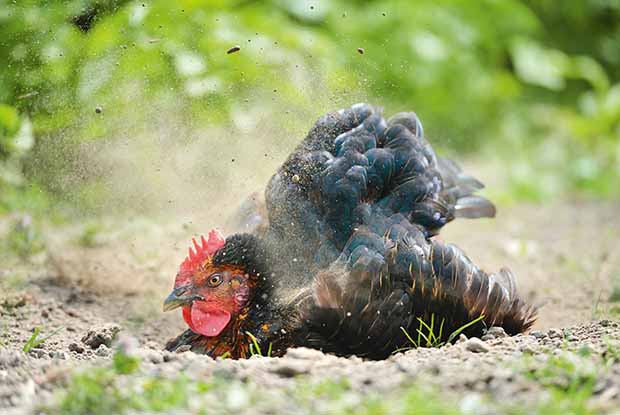3 reasons why red mites are such a big pest for chickens

One of the most aggravating pests in any hen house is red mites. They’re also one of the hardest to spot until they’re a real problem. They’re just half a millimetre or so in size and hide away in the cracks and crevices of your coop, only coming out at night.
Words: Nadene Hall
1. RED MITES KNOW THE TEMPERATURE
Red mites feed at night. They don’t have eyes, but they know it’s night time because they sense the temperature drop and go out to feed.
They also sense when it’s rising again and that their food source has moved away, signalling each other using pheromones that it’s time to go back into hiding.
2. RED MITES ARE HUNGRY
A red mite infestation can suck up to 5% of a hen’s blood in one night. Each mite feeds for about two hours.
3. RED MITES COST YOU MONEY, BUT NOT IN THE WAY YOU THINK
This is an odd side effect which is more pronounced for people with large numbers of birds. Birds affected by red mite become stressed and anaemic, causing them to lose feathers, meaning they eat more food in a bid to stay warm.
3 CLUES THAT RED MITES ARE HARMING YOUR HENS
Red mite is one of the worst pests to affect hens at this time of year. The signs include:
1.Your hens start laying or roosting outside the coop
Red mites live in crevices in wood framing, perches and nest boxes, coming out at night to feed, sucking the blood of your birds which may be reluctant to go into their coop, or actively choose to roost elsewhere.
2.Pale combs, weight loss & depression
Birds may appear restless or unsettled when perching, be anaemic (and die), depressed, eat more but lay less eggs, or get sick with other diseases.
3.You find a strange, grey ‘dust’on wood framing
This ‘dust’ looks a bit like ash but is actually dried mite faecal matter. Check late at night or first thing in the morning by running your thumb around the roosts – the ash will smear red in colour.
A SUBTLE FIRST SIGN OF RED MITES

Dust baths might seem counter-productive, but assist birds in staying clean. A bird that stops having dustbaths and preening its feathers may be feeling depressed due to anaemia caused by red mites.
This is often the first ‘symptom’
One of the more subtle signs of a mite infestation can be an increase in noise and restless behaviour when your birds are roosting in their coop overnight. Mites come out at night, irritating birds which respond with noise and movement. Another sign is a bird that starts to look dirty. Affected, depressed birds preen less and stop taking dust baths, resulting in their feathers looking dirty.
Take a midnight run
The best way to spot the beginning of an infestation is to check your coop each night. Take a torch and have a look at the perches. Once mites feed and
move off the bird, they will be bright red and round. Regular checks mean you will pick up on an infestation when it’s small, which is far easier to manage. Regular treatment also helps prevent mites from reproducing.
READ MORE
How to prevent parasites from feasting on your poultry and eggs
10 things every chicken owner should know about Marek’s disease
Love this story? Subscribe now!
 This article first appeared in NZ Lifestyle Block Magazine.
This article first appeared in NZ Lifestyle Block Magazine.
